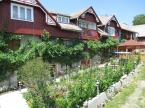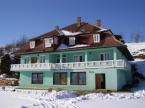Information
- For the commune in Harghita County, see: Satu Mare, Harghita
- name in Hungarian: Szatmárnémeti, German: Sathmar) is a city with a population of 115,000 and the capital of Satu Mare county, Romania.
Population
According to the 2002 census, Satu Mare has a total population of 115,142, the ethnic breakdown is as follows:- Romanian: 66,638 (57.87%)
- Hungarian: 45,302 (39,34%)
- German: 1,607 (1.18%)
- Roma: 1,115 (0.96%)
The city day is May 14, which commemorates the tragedy that affected the city in 1970, although it is also a day of rebirth.
History
- The area of Satu Mare has been inhabited since stone age times. The archeological discoveries made in Oas-Land, Ardud, Medies, Homorod and other places have revealed abundant evidences regarding the stone- and bronze age settlements in this area.
- A fortress by the name of Zotmar (Castrum Zotmar) was mentioned in the Gesta Hungarorum as being in the lands ruled by Menumorut in the early 10th century. According to the chronicle, the fortress was taken by the Magyars after three days of fighting. In 1006 Germans were settled around the fortress by the Hungarian queen Gizella. Later, more Germans settled in the town of Mintin, across the Someş river.
- After 1543 the fortress, then owned by the Báthory family, was reinforced and a moat was built around it. The fortress was under siege by the Ottomans in 1562 and later destroyed by the Austrian Habsburgs. The Austrian Lazar Schwendi, using the latest Italian fortification techniques, rebuilt the fortress.
- In 1703 the whole city burned down.
- In 1721, Satu Mare, unified with Mintiu/Mintin, became a "royal free city" and prospered as an important center of trade and craftsmanship.
- In the 18th century much of the city was rebuilt and among the landmarks are the old City Hall, the inn and several churches.
- At the end 1760s population rose to about 5000 people.
- 1804 Catholic Bishopric founded.
- According to the census of 1910 Satu Mare had a population of 45,000, out of which 94.5% were Magyars (including the Hungarian-speaking Jewish people)
- Satu Mare is the origin of the Satmar community of Hasidic Jews, now residing in New York, Jerusalem, London and other places.
- Historical speech in Satu Mare, on 2 March 1919 of Hungarian Primeminister Karolyi in front of the Szekely division: "we'll fight for our country"
- On 20 March 1919 a representative of the Allies in Budapest handed Károlyi a Note ordering him to evacuate a further area of central Hungary for the benefit of the Roumanians. The new case-fire line: Satu Mare - Carei - Oradea - Salonta - Arad. Count Karolyi's government resigned. Bolshevics led by Bela Kun came to power.
- On 16 April 1919 the Romanian Army starts an attack across the case-fire line against the Hungarian Soviet Republic.
- On 19 April 1919 the Romanian Army marched in Satu Mare.
- Since 1920 Satu Mare became part of Romania. In 1930 it had 33 banks located in the city centre that fed an extremely prosperous industrial activity.
- More than half of those who fled Poland after the German invasion 1939 went to Romania and Hungary.
- As a consequence of the Vienna Award/Vienna Diktat, 30 august 1940 the city was given to Hungary.
- During WWII Satu Mare and the surrounding areas were the stage of many crimes and deportations performed by the Hungarian government. Anti-Semitic activities were a common reality in the life of Satu Mare while the city was under Hungarian occupation. In the memmory of the victimes os the crimes performed by the Hunagrian and German fascists in the Satu Mare area, a momnument has been raised in front of the Satu Mare Sinangogue.
- Despite the many casualties and discriminatory measures, however, the bulk of the Jews of Northern Transylvania, like those of Hungary as a whole, lived in relative physical safety, convinced that they would continue to enjoy the protection of the conservative-aristocratic government. This conviction was shattered almost immediately after the German occupation of Hungary on March 19, 1944.
- Some details relating to the ghettoization of the Jews in Northern Transylvania were discussed and finalized at two conferences chaired by Laszlo Endre(undersecretary of State in the Ministry of the Interior). These were attended by the top Hungarian officials in charge of the final solution and representatives of the various counties and municipalities, including the county prefects and/or deputy prefects, mayors, and the police and gendarmerie commanders of the affected counties. The first conference was held in Satu Mare on April 6, 1944, and was devoted to the dejewification operations in the counties of Gendarmerie District IX, namely Bistriţa-Năsăud, Bihor, Cluj, Satu Mare, Sălaj, and Someş.
- The area was recovered by the Romaniann and Soviet army on 25 October 1944 after the heavy battle of Carei. During the war at least 18,000 Jews from the Satu Mare area were deported and murdered in concentration and extermination camps.
- By 1950 Satu Mare once again had roughly the same population of 1930. It took almost three decades for Satu Mare to become a properous city once again. In the 1970s the city was subject to an extensive process of modernization performed by the Romanian communist government of that time after the floods that took place on 14 May 1970. The most visible achievement of the reconstruction process was the impressive building of city hall which features unique architecture- the symbol of the city [1]. However, the collapse of communism placed Satu Mare into a long period of stagnation during the 1990s when it lost around 20,000 inhabitants due to the closing down of many industrial plants.
- Nowadays Satu Mare is a dynamic city with an industry that is entering the global economy. A considerable number of the inhabitants of the area work aboard, mostly in Western Europe but their families remain based in Satu Mare.
See also
- Danube Swabians
- Satmar
External links
Municipalities in RomaniaSatu Mare CountyForrás: Wikipedia
Satu_Mare

 English
English









